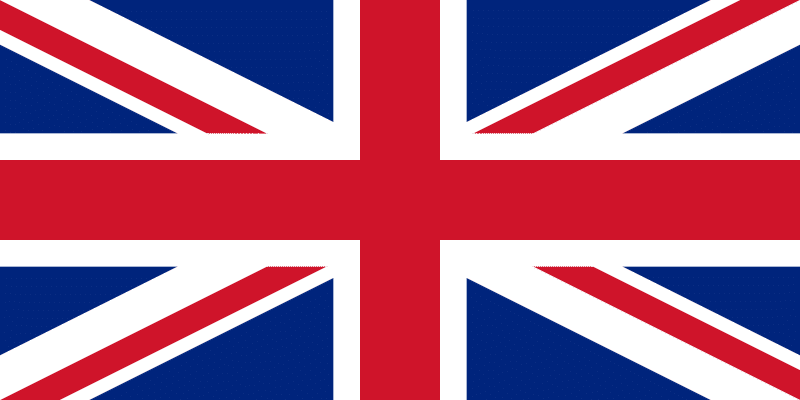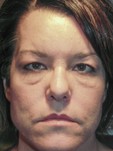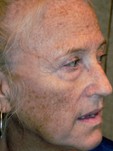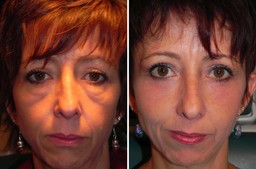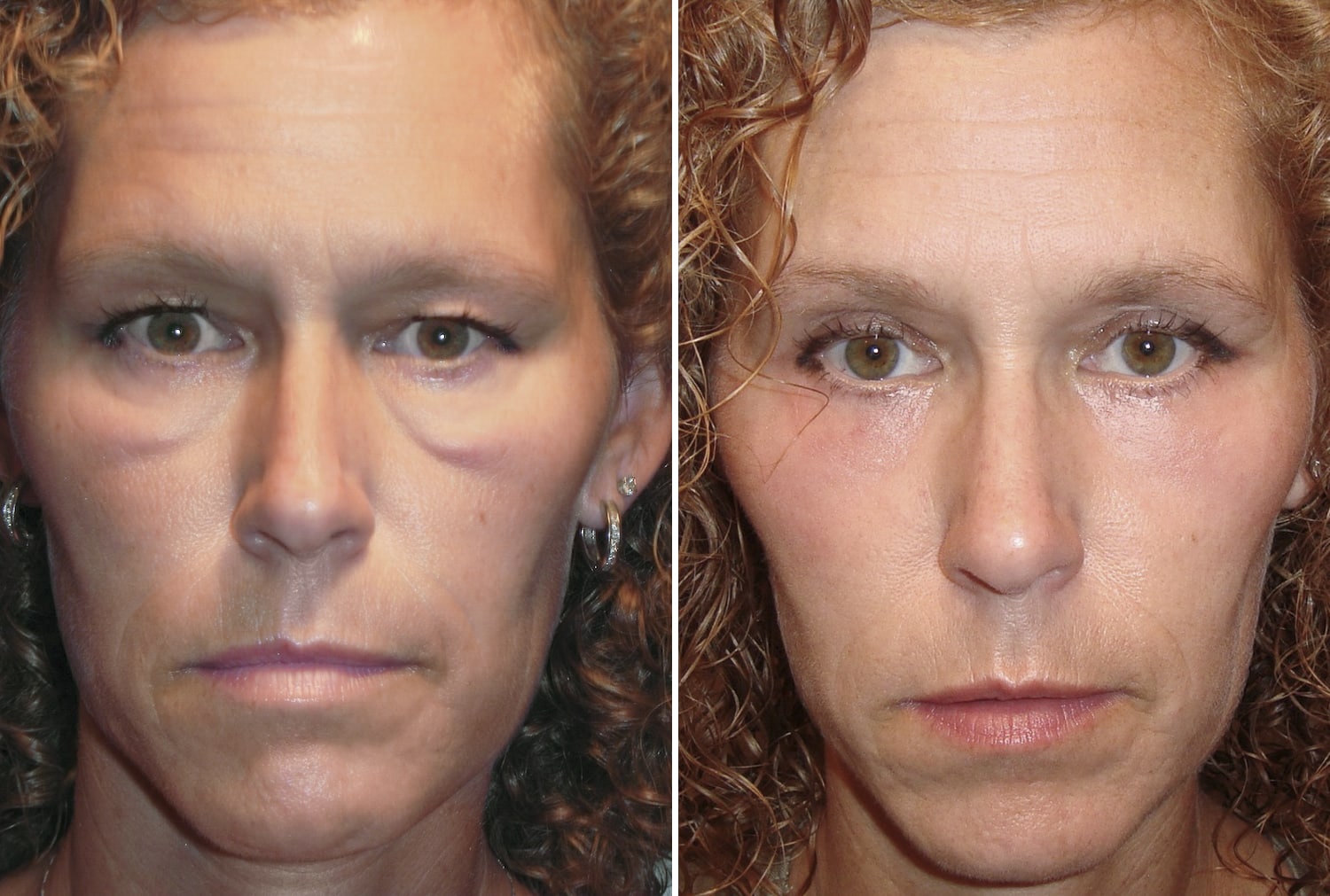I help patients from around the globe with my sun damage restoring facial rejuvenation techniques, and lately I’ve been seeing more and more patients from the United Kingdom. Many come to me for help with conditions known as lower eyelid Festoons and Malar Mounds.
Curious as to why this is the case, I began to hypothesize why so many people from the United Kingdom might suffer from Festoons and Malar Mounds. The reason, I’ve come to discover, is rooted in understanding the causes of lower eyelid Festoons and Malar Mounds.
The Role of Skin Type in Festoon and Malar Mound Formation
What are Festoons?
Festoons and Malar Mounds are both terms used to describe skin folds and swelling of the lower eyelid and cheek. They form as a result of years of sun damage and forces under the skin caused by contrasting muscle action.
Festoons, along with lower eyelid bags, can make us appear tired or sick even when we feel great inside. Patients with this condition often report that others think they are perpetually tired. It can be frustrating for someone who feels perfectly fine to be perceived as tired when they are not.
While some people have a family genetic predisposition to Malar Mounds and eyelid Festoons, most people develop them as a result of sun damage to the fragile skin in the lower eyelid and cheek regions. Small doses of unprotected sun exposure over our lifetime can be as damaging to the skin as the few sunburns we experienced in our youth.
As humans, we have varying degrees of melanin in our skin and, as a result, varying degrees of skin pigmentation. In the clinical world, this is known as the Fitzpatrick Skin Type.
- Type I skin almost always burns and never tans in the sun. Patients in this class are at a higher risk for the sun damage that can lead to Malar Mounds and Festoons, as well as skin cancers.
- Type II skin almost always burns and rarely tans in the sun. Patients in this class are also at a higher risk for sun damage.
- Type III skin sometimes burns and sometimes tans in the sun. Patients in this class are a bit less likely than Types I and II for sun damage due to the slightly higher amount of melanin in their skin.
- Type IV skin tans easily and is less likely to burn. Although patients in this class can also suffer from the sun damage that leads to Malar Mounds/Festoons and skin cancers, they are less likely than those with Types I – III.
- Type V skin tans easily and rarely burns. Patients in this class are much less likely to suffer from the sun damage that leads to Malar Mounds/Festoons and skin cancers.
- Type VI skin never burns and is naturally dark. Patients in this class have skin that is very resistant to the sun damage that leads to Malar Mounds/Festoons and are much less likely to suffer from sun damage than those with Types I – V.
Patients with skin types V – VI are a much darker color and are resistant to the UV effects of the sun given the higher amount of melanin in their skin. Those with darker skin types don’t develop the same wrinkles, sun spots or Festoons/Malar Mounds as those with lighter skin types.
With these different skin types in mind, it becomes easier to understand why we may see more issues with Festoons and Malar Mounds in certain skin types—and certain regions.
Translating This to the UK Population
Although the United Kingdom is multicultural, its largest population tends to come from the countries within this kingdom (England, Scotland, Wales and Northern Ireland), which tend to have skin types I – II. These are the skin types that are most likely to be affected by the sun damage that can lead to Malar Mounds/Festoons and skin cancers.
Interestingly, society and culture have also played a role in the sun damage seen in the UK. As reported by the BBC, holiday packages to sunny locations, which first appeared in the ’60s, introduced these fair-skinned individuals to more intense sun exposure than they normally experienced at home. In addition, society has long valued a tan as a way to express a vacation lifestyle. But those with skin Types I and II have a hard time getting “tan”; they tend to burn instead.
As a result, those with skin Types I and II must endure a greater amount of sun exposure to achieve a “tan,” and this greater amount of exposure results in the skin damage that makes people more predisposed to develop age spots, wrinkles, Malar Mounds and eyelid Festoons.
So, now we know why people with lighter skin types—such as those found in the United Kingdom—are more susceptible to sun damage in general and Malar Mounds and Festoons specifically. But once the damage is done, are there techniques to help repair this damage and improve the condition of the skin?
In a word: yes.
RESETing Sun-Damaged Skin
The best way to improve lower eyelid Festoons and Malar Mounds is to address their root cause—i.e., the tissue that has been sun-damaged over time. Treatments like my RESET procedure for Festoons and Malar Mounds use lasers to remove past sun damage and enable new skin to grow back in its place.
This new skin has brand-new collagen and elastic fibers that tighten it, making this one of the best ways to improve lower eyelid Festoons and Malar Mounds.
If you have problems and would like assistance with facial sun damage or Malar Mounds and eyelid Festoons—whether you’re from the UK or anywhere else in the world—please contact my office for a consultation.
